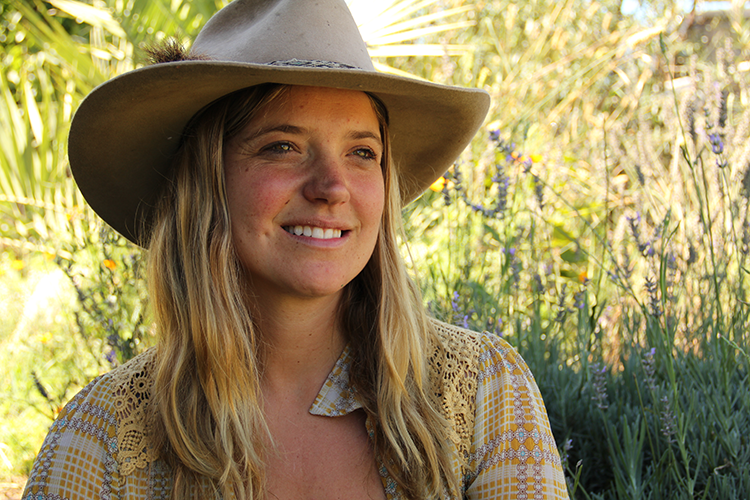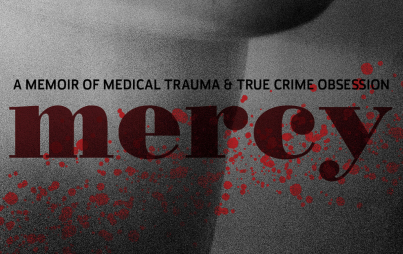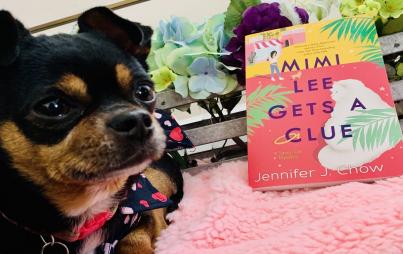
Image from Propriometrics Press
When I was a kid, I tried to live my life in the trees. We had this one big tree out in our yard that was perfect for climbing — you could perch out there and stay in it for hours. I even tried to convince my mom to let me eat dinner in the tree, but she settled for having me come down to eat and then go right back up there.
That curiosity and dedication to nature is central to Dawn Again: Tracking the Wisdom of the Wild by Doniga Markegard, who is a wilderness school instructor, permaculture expert, regenerative farmer, and wildlife tracker. Doniga went to Jon Young’s Wilderness Awareness School in Washington state when the program was in its first year at 15, and she later became an instructor at the school. In Dawn Again, Doniga brings us through her teen years falling in love with wildlife tracking all the way to hitchhiking across Alaska and the West Coast, where she learns to track wolves and dives deeper into wilderness survival.
Doniga now lives on a ranch in San Mateo County, California with her husband Erik and their children, Quince, Lea, Larry, and Quill. Doniga still teaches as a wilderness school instructor, and it’s important to her that her own kids learn about nature and wildlife — where food comes from, how to take care of the land, how to be in tune with animals. I really connected with Doniga’s spirit of survival, and her passion for inspiring curiosity about the world around us. I often feel very different from my friends as someone who went to an agricultural high school to study veterinary science but wound up working in publishing, because I see wonder in the smallest everyday moments. Doniga doesn’t let go of that innate, endless curiosity and wonder — she charges headfirst into it.
In your memoir, you talk a lot about wilderness awareness school. Do you think parents should send their children to these kinds of programs? What will they learn there that they can’t learn at a conventional school?
What the wilderness awareness taught me was an outlet for some of the things I was feeling as I was beginning to experience my own individualism. Learning directly from nature is a very pure source of reflection and discovery. Kids so often, from a very young age, are put in a square, indoor building and they’re taught things from the front of the classroom that they may or may not have chosen themselves to learn and may not be passionate about. It’s very difficult in a modern school setting to focus on individual passions and curiosities of each student.
What nature school provided for me, and the kids I see coming through nature school of all ages, is the opportunity to reach that passion inside — exploration, curiosity — not only about the natural world, but also what’s going on inside, mentally, instinctually. It gives us an opportunity to tune into ourselves.
What do you do as a wilderness instructor? What goes into that kind of teaching, and what are you working on with the kids in your classes?
I’ve been a wilderness instructor probably since I started, because what really synthesizes learning is having to teach it to others. I’d recommend anyone who wants to learn wildlife tracking or naturalist skills to bring someone else along with you. As a teacher, I do a lot of storytelling, inspirational stories of cool experiences I’ve had. Mostly what I share with my students are everyday things, like coming into my ranch and identifying five aerial predators and watching them hunt and fly, and watching the song birds react to the aerial predators flying overheard. Sharing everyday experiences that can add depth and meaning to life, and pique the curiosity of your students.
One of the first things we do as a warm up is animal forms. We go around, and we move our hands up like a deer. We tune into all of our senses. We get people out of this constant sort of thinking and boredom, and into seeing things from the eyes of an animal. We do a lot of fun animal forms and games, and getting people to really be in their bodies in a really engaged way. There’s never boredom in nature. There’s always a new plant to learn more about. There’re always more mysteries to be solved.
How do you try to pass down your love of nature and respect for the wilderness to your children?
Our children have the opportunity to grow up on a 1,000-acre ranch, and our house is situated right in the middle. They know that if they need something from mom, they have to go outside and talk to her while she’s milking the cow and help her milk the cow. They probably don’t realize how unique their upbringing is. We take long walks at sunset to look at the ocean. They’re exposed to growing your own food, feeding yourself, taking care of the land, paying attention to not only humans but every species, as if those species were also your relatives.
You Might Also Like: How Do Memoirists Survive Telling Their Hard Stories?
I think that more than anything, kids pick up on what their environment is. If they had a parent that was just telling them all of this stuff but not actually doing it, I don’t think the results would be very good. They see me out there getting just as dirty — if not dirtier — than them. They see me taking my shoes off and going barefoot up the tree. They see me in the kitchen making a meal from ingredients gathered from the land. They’ve experienced that and that’s going to stick with them. If you’re really experiencing it through all your senses — say you’re surfing out in the ocean and you have a really amazing experience with a dolphin and all your senses are engaged and you’re in the moment because you have to be — that’s going to stick with you for the rest of your life. As parents, I feel our role is to lead by example and facilitate really epic experiences.
Because you’re fully engaged in the moment, it becomes a really incredible moment where you feel fully alive.
If the kids aren’t excited about something they’re learning or they aren’t passionate about a topic, how do you get them fully engaged?
When I was going to the wilderness school, it was the first time that folks had really taken the leap from putting kids in a modern school and putting them in full wilderness immersion. The way that I was mentored, if I wasn’t interested in something, I didn’t follow through. My mentors did question things. They would ask questions to pique inner curiosity. Say I wasn’t necessary into doing a lot of research, but I was interested in a plant and the uses of the plant and how I could use it for medicine (because that was one of the first things that interested me) — I had to pull out the books. I had to go to the library. I had to research how much medicine you could use from that plant without it becoming toxic.
The more we could put the sort of things that are boring to kids (or adults) into practicality, the more that boredom drifts away.
You’ve said that you teach your children to deal with their emotions by seeking out solace in nature. Can you tell me more about what that looks like?
As early as they can remember, if they’re going through some sort of emotional outbreak, I’ll say, you go outside and talk to the tree about that. They don’t come back until they’ve been able to process these emotions. It starts as simple as that.
When I was a teenager, I would go sit at my secret spot, a lot of times it was next to the river or a pond, and write in my journal. Teenagers go through a lot of emotions: depression, anxiety, and confusion about their own individuality. And in our society, there are a lot of quick fixes to these emotions, like video games. For working through emotions, I journaled out in nature. I journaled experiences, what was happening, and my emotions. When I wrote the book, I put myself back into that teenage girl, trying to figure things out.
How did you put yourself in that headspace to revisit your teenage years?
I have boxes and boxes of my journals. I’d never looked back at them. I went through all my journals, I sticky-noted trends. It was very difficult for my husband to be around when I was writing about my teenage years. I was acting like a teenager when I was writing about my teenage years. I had to physically do something to shift from writing back into the present — mother, wife, rancher Doniga. I wrote in the morning when there was absolutely no distraction, like when I was sitting outside next to a tree. I wrote a lot of it in a treehouse at 150 feet up in the air, so that added another ethereal feeling to what I was writing. I put myself back there and recreated it from memory and from journals.
What is one simple but important tip you would offer to someone who is new to sustainability and who wants to make a positive impact on the planet?
Start with something you do every day: eat. Track where your food is coming from. Challenge yourself to source as much of your food as possible from people who grow or raise it themselves nearby or better yet, from your own backyard. Ask questions of those farmers, get to know their challenges and what they love. Help them, visit them. Take some of the food they work so hard to grow and make something useful like jam or ice cream or pesto and give it back to them.
Do you ever receive any push back from the kids? Your own or students?
I was a rebellious teenager, I ran away from home, even though I didn’t have that much to rebel against. I had a very good childhood. But the rebellion just comes up and how kids express that can be in varying degrees. I’ve seen a lot of kids go through that type of rebellion like, “No I don’t want to go to nature school, I want to stay home and play video games.” My kids haven’t gotten to that point yet. I do have one daughter, Quill, who may be the one who rebels a little bit against things, so she might say, “I don’t want to go to nature school, so I’m going to sit here and read a book, Mom.” That’s something we all deal with as parents and as teachers.
Your book deals with the theme of survival, both in wilderness and beyond. What does it mean to you to survive?
My meaning of survival has shifted, and through the book you can see that real progression. Right now, in my life, survival is very simple. It’s providing clean air to breathe, clean water, food, a shelter, and warmth for myself and my family in a way that regenerates the earth and adds more life to every life taken, whether it be animal or plant, and that the soil is healthier, and my surrounding community is healthier. With the people I interact with, I give more than I receive.
Related
-
8 Things Strong, Feminist Women Do WAY Differently
-
Roxane Gay: Bad Feminist, Author, Amazing Human
-
3 Amazing New Podcasts To Tune Into This Fall








